Herbert Austin’s famous motorworks stood near this Wetherspoon pub which bears the name of his famous Hornet model, produced from 1930 until the mid 1970s.
Prints and text about The Hornet.
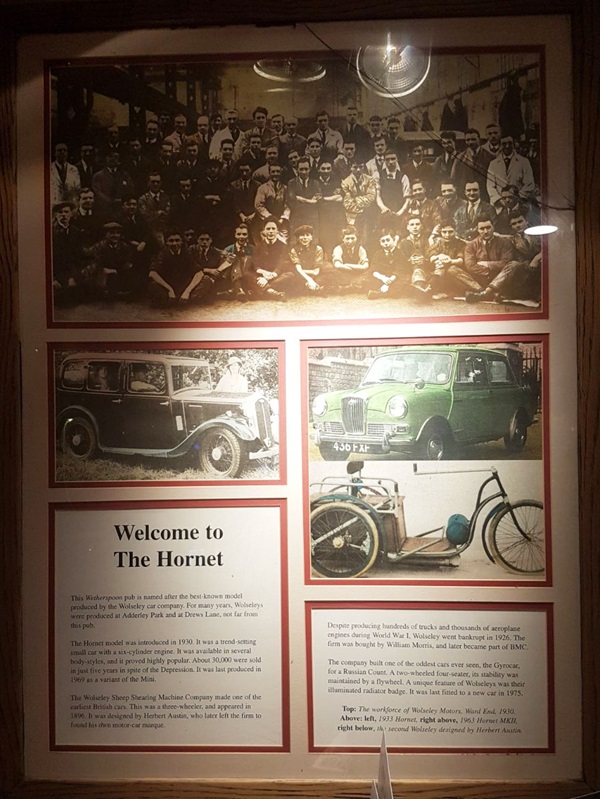
The text reads: This Wetherspoon pub is named after the best-known model produced by the Wolseley car company. For many years, Wolseleys were produced at Adderley Park and at Drews Lane, not far from this pub.
The Hornet model was introduced in 1930. It was a trend-setting small car with a six-cylinder engine. It was available in several body-styles, and it proved highly popular. About 30,000 were sold in just five years in spite of the Depression. It was last produced in 1969 as a variant of the Mini.
The Wolseley Sheep Shearing Machine Company made one of the earliest British cars. This was a three-wheeler, and appeared in 1896. It was designed by Herbert Austin, who later left the firm to found his own motor-car marque.
Despite producing hundreds of trucks and thousands of aeroplane engines during World War I, Wolseley went bankrupt in 1926. The firm was bought by William Morris, and later became part of BMC.
The company built one of the oddest cars ever seen, the Gyrocar, for a Russian Count. A two-wheeled four-seater, its stability was maintained by a flywheel. A unique feature of Wolseleys was their illuminated radiator badge. It was last fitted to a car in 1975.
Top: The workforce of Wolseley Motors, Ward End, 1930
Above: left, 1933 Hornet, right above, 1963 Hornet MK11, right below, the second Wolseley designed by Herbert Austin.
A collection of photographs and prints showing Wolseley car models.
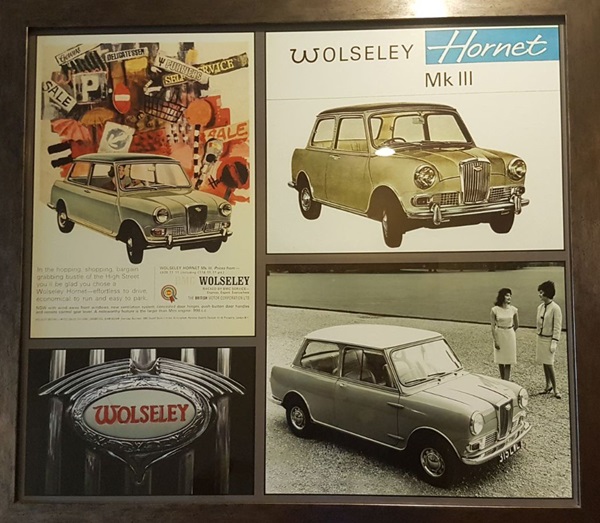
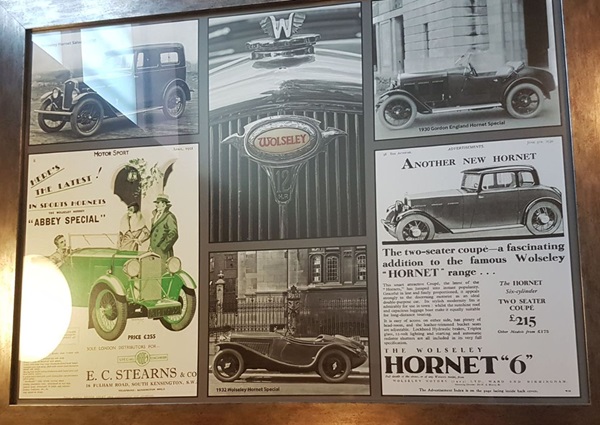
Prints and text about John Taylor and Sampson Lloyd.
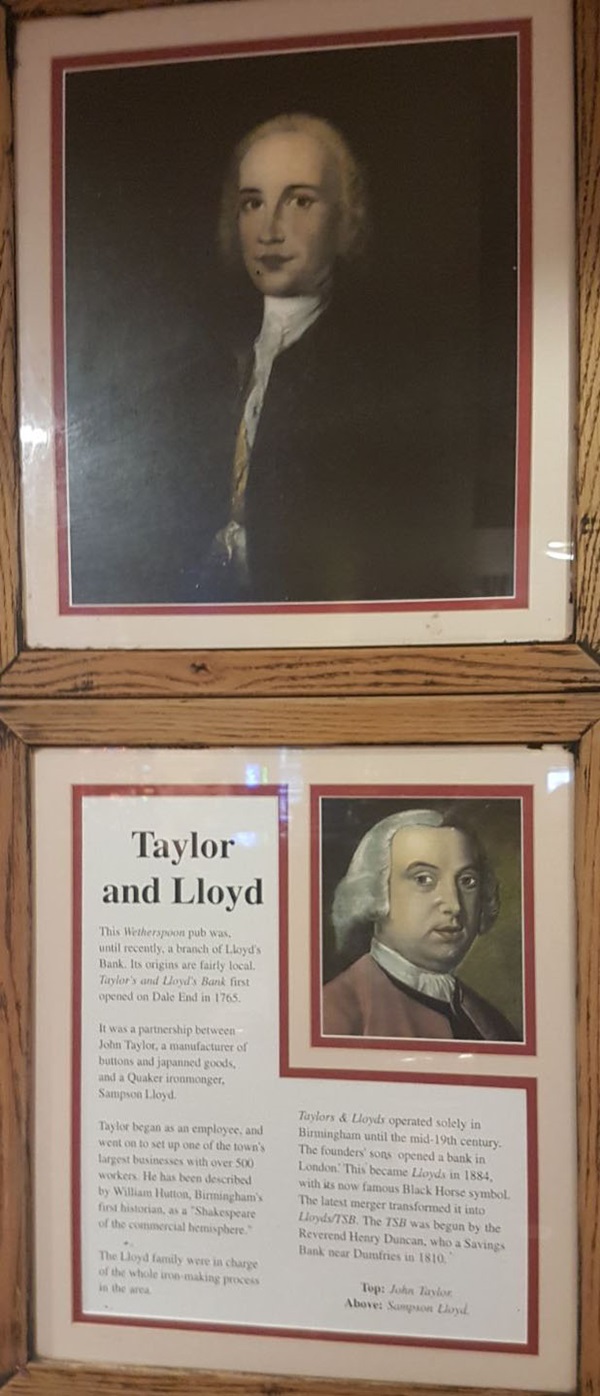
The text reads This Wetherspoon pub was, until recently, a branch of Lloyd’s Bank. Its origins are fairly local. Taylors and Lloyds Bank, first opened on Dale End in 1765.
It was a partnership between John Taylor, a manufacturer of buttons and japanned goods, and a Quaker ironmonger, Sampson Lloyd.
Taylor began as an employee, and went on to set up one of the town’s largest businesses with over 500 workers. He has been described by William Hutton, Birmingham’s first historian, as a “Shakespeare of the commercial hemisphere”.
The Lloyd family were in charge of the whole iron-making process in the area.
Taylors & Lloyds operated solely in Birmingham until the mid 19th century. The founders’ sons opened a bank in London. This became Lloyds in 1884 with its now famous Black Horse symbol. The latest merger transformed it into Lloyds TSB. The TSB was begun by the Reverend Henry Duncan, who opened a savings bank near Dumfries in 1810.
Top: John Taylor
Above: Sampson Lloyd.
Illustrations and text about royal connections.
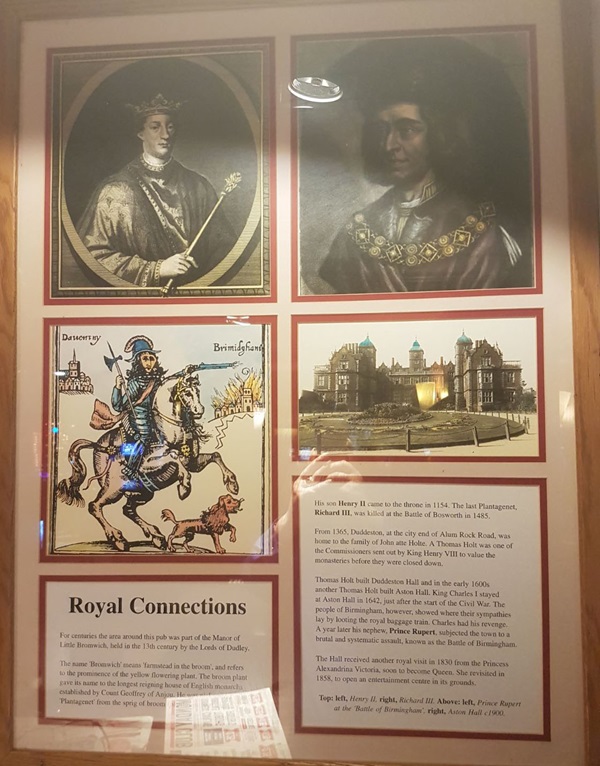
The text reads: For centuries the area around this pub was part of the Manor of Little Bromwich, held in the 13th century by the Lords of Dudley.
The name ‘Bromwich’ means ‘farmstead in the broom’, and refers to the prominence of the yellow flowering plant. The broom plant gave its name to the longest reigning house of English monarchs established by Count Geoffrey of Anjou. He was nicknamed Plantagenet from the sprig of broom that he wore.
His son Henry II came to the throne in 1154. The last Plantagenet, Richard III, was killed at the Battle of Bosworth in 1485.
From 1365, Duddeston at the city end of Alum Rock Road was home to the family of John atte Holte. A Thomas Holt was one of the commissioners sent out by King Henry VIII to value the monasteries before they were closed down.
Thomas Holt built Duddeston Hall and in the early 1600s another Thomas Holt built Aston Hall. King Charles I stayed at Aston Hall in 1642, just after the start of the Civil War. The people of Birmingham, however, showed where their sympathies lay by looting the royal baggage train. Charles had his revenge. A year later his nephew, Prince Rupert, subjected the town to a brutal and systematic assault, known as the Battle of Birmingham.
The hall received another royal visit in 1830 from the Princess Alexandrina Victoria, soon to become Queen. She revisited in 1858, to open an entertainment centre in its grounds.
Top: left, Henry II, right, Richard III
Above: left, Prince Rupert at the Battle of Birmingham, right, Aston Hall, c1900.
Photographs of local stars, including Charlie Hall and Duran Duran.
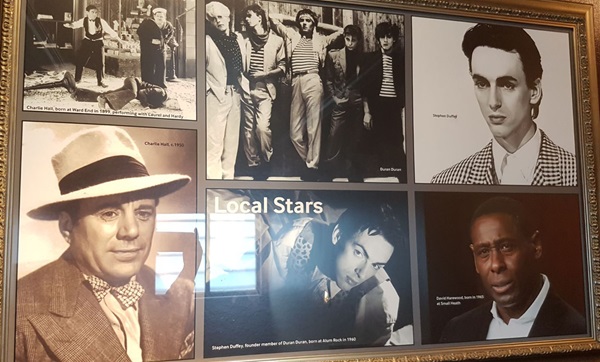
External photograph of the building – main entrance.
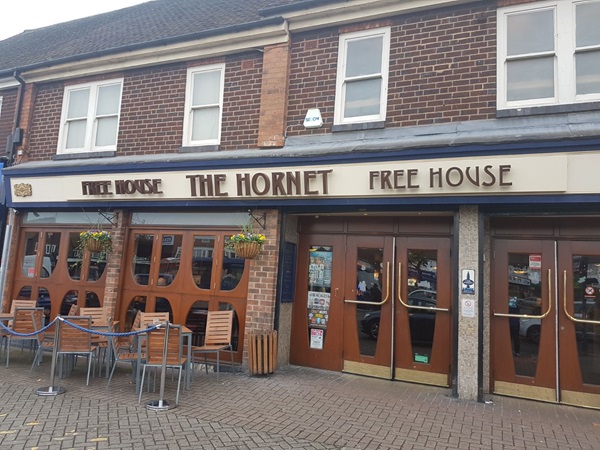
If you have information on the history of this pub, then we’d like you to share it with us. Please e-mail all information to: pubhistories@jdwetherspoon.co.uk